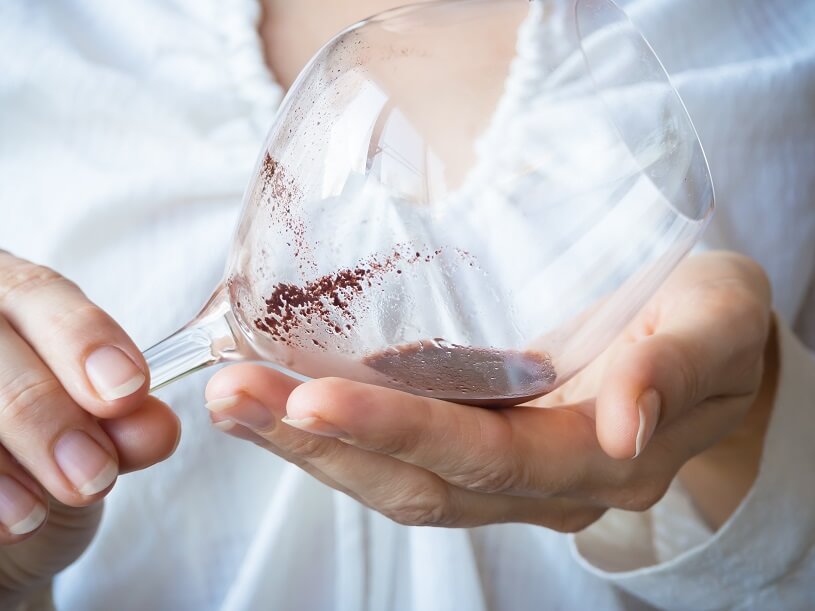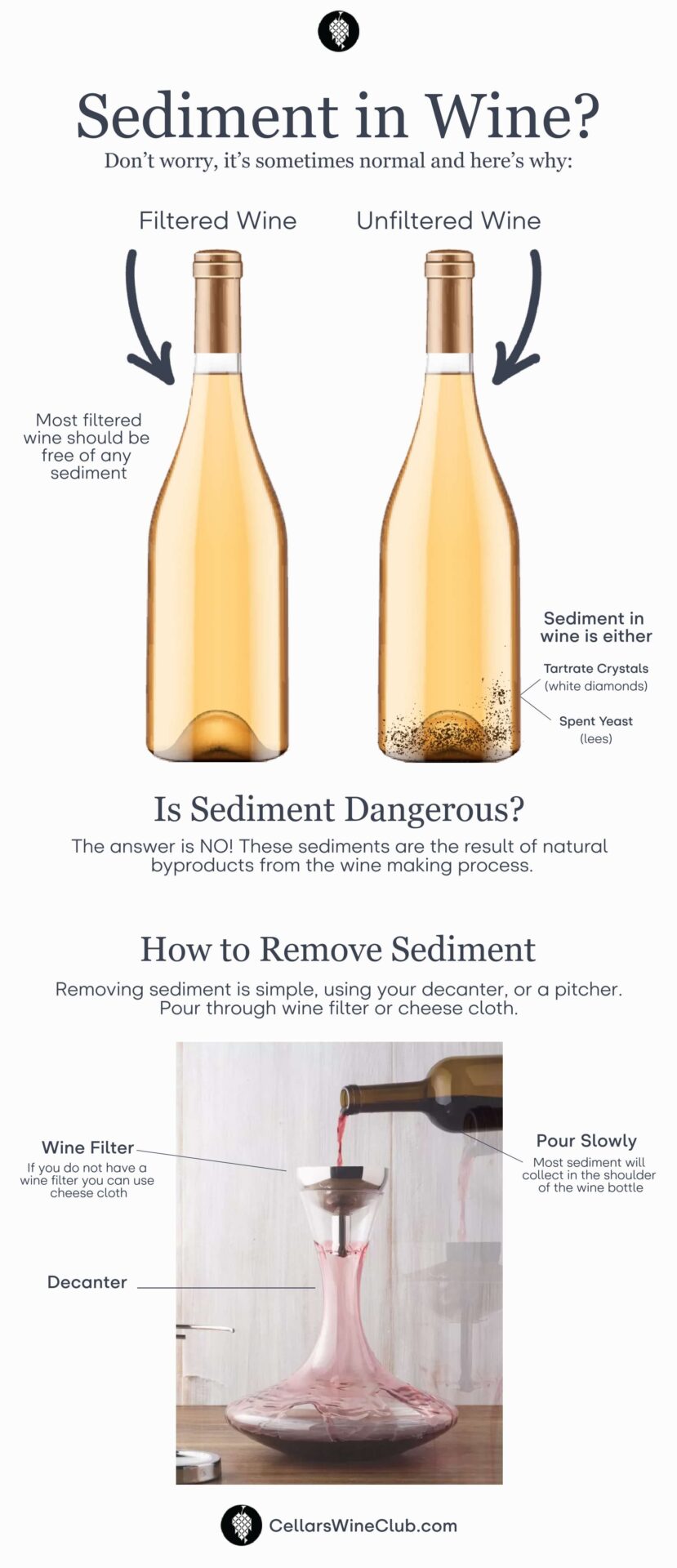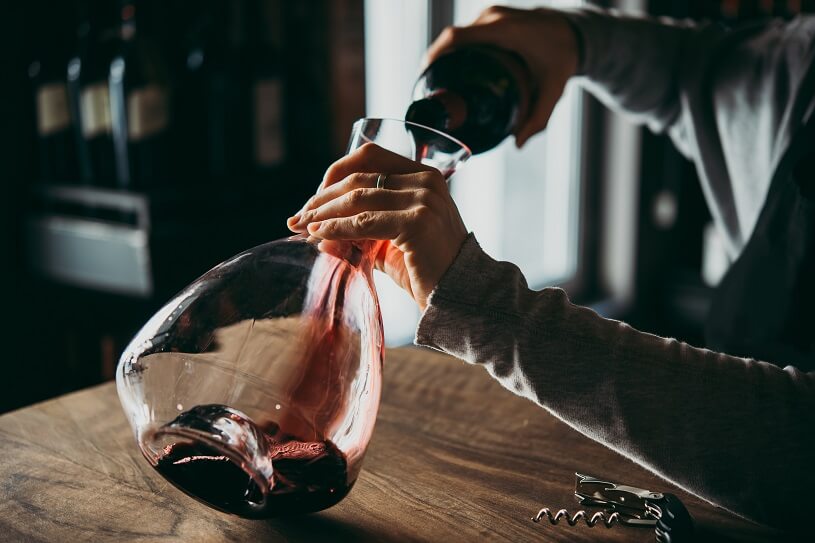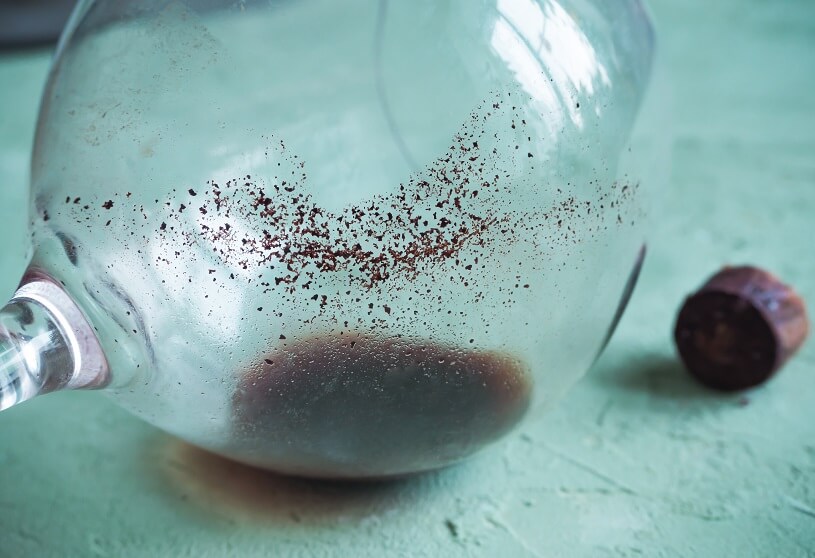Sediment in Wine – What You Need to Know

Imagine drinking a glass of your favorite red wine and suddenly noticing some reddish sludge invading your almost-empty glass. We’ve all been there.
Such a disturbing surprise usually stops us from taking the last sip. All in all, who wants a sludgy mess swishing around unpleasantly in the mouth?
These sand-like particles are known as wine sediment. It’s also called wine crystals, wine diamonds, or wine dregs. But is it safe to drink?
Let’s dive deeper into the topic and find out what wine sediment is and everything you need to know about it.
What Is Wine Sediment?
In simple words, sediment in wine is a naturally forming byproduct of the winemaking process, which frequently settles to the bottom of your wine glass. The substance is commonly made up of only one ingredient: grapes.
To be more precise, it includes smallish traces of grape skin, seeds, and other solids, which are essential as they are what gives most of the wine’s color, aroma, and texture. Wine sediment forms during the fermentation process or as the wine ages in the bottle.
So is it safe?
One hundred percent yes! It’s completely natural and safe. What is more, while some winemakers refine and filter their wines to get rid of the particles, others intentionally leave those as they believe the presence of wine sediment in the bottle indicates that their wine is especially natural.
So next time, don’t worry! As unpleasant as it may look, this floating stuff can be a sign that you’ve got yourself a high-quality bottle.

White Wines vs. Red Wines
It’s a widespread opinion that one can seldom come across sediment in white wines. However, things are a bit different.
Though whites are not fermented with the grape skin, pulp, and seeds like reds, they are more likely to be chilled or stored in the fridge, meaning you have a high chance of experiencing tartrate crystals in white wines.
Wine sediment typically occurs in both white wines and red wines. There are two types of sediments: lees and tartrate crystals. Lees are a common occurrence in reds, whereas tartrate crystals, also known as wine diamonds, are a phenomenon in white wines.
Most of all, sediment affects aged red wines. Though new red wines are full of grape particles, most of the sediment falls out during the aging process and fermentation. The longer the wine stays in the cellar, the more time particles have to gather together and sink to the bottom of the bottle.
After years of aging, a fine sediment accumulation of lees forms at the bottom of the bottle, which can serve as an indication of an excellent, well-aged red wine.
Forms of Wine Sediment
There are two forms of sediment: tartrate and colloids.
Tartrates
You may discover this organic acid on the cork’s end or sticking to the sides of the wine bottle or your glass. When tartaric acid (a natural element found in grapes) binds with potassium in cold conditions, burgundy-colored crystal-like substances tartrates are formed.
As chilly conditions are perfect for tartaric acid compounds to combine with potassium to form a crystal, these wine diamonds frequently appear in the drinks. It’s a more common occurrence in white and rosé wines rather than in red ones that don’t go through cold stabilization.
Colloids
Colloids are smaller compared to tartrate sediment. This finer-grained substance is formed by components naturally present in wine. For instance, these may be carbohydrates, proteins, or condensed phenols. It can also occur as remains of grape seeds, skin, or stems.
Important clarification for wine enthusiasts: both forms of sediment are natural and safe!
Which Wines Should You Choose to Avoid Sediment?
If you are a wine enthusiast striving to find a wine bottle and initially avoid an unpleasant sediment experience, then we have a few tips for you.
Go for organic white wines if you are a white wine lover. Organic or biodynamic winemakers take pride in making wines that are not overproduced. It may be an ideal choice to avoid an encounter with wine crystals at once.
The next stop is high-quality red wines. All in all, we couldn’t leave red wine connoisseurs aside. Usually, red wines don’t undergo cold stabilization as they don’t need to be chilled to achieve optimum quality. However, this might work only with wine crystals. The strategy doesn’t work with other sediment types, such as lees and dregs (grape particles.)
Have you ever thought of how fabulous red wines’ hue and tannic flavor are? These are due to the naturally occurring tannins extracted from grape skins, seeds, and stems. So after being fermented, matured, and bottled, red wines are more prone to having grape particles suspended in them.
How to Remove Sediment in Wine?

If you can’t stand the thought of sediment in any form, you must learn how to avoid it in your wine glass. There are several options.
First, store your wine bottles upright to settle all the sediment at the bottom of the bottle.
Also, you can try a decanter to reduce the number of solids in your drink. After pouring wine into the vessel, let it sit there for a while and aerate. While serving, be sure to leave the last drops of wine (including all sediment) at the bottom of the vessel.
In-bottle wine aerators can also help you defeat your sludgy enemy. An in-bottle aerator filters your drink as you pour, acting as a wine sediment filter.
The Bottom Line

Though sediment in wine may look like a disturbing sludge that can cross the whole drinking experience, it’s not dangerous and harmful at all.
On the contrary, wine sediment is a naturally forming byproduct of the winemaking process created during the fermentation process or as the wine ages in the bottle. It’s an indication that the wine is natural.
While some winemakers refine and filter their wines to get rid of the sediment, others opt for minimal intervention in the winemaking process to strip their wines of valuable aromas and flavor characteristics.
If you can’t stand the thought of sediment in any form, use our tips above to remove the substance quickly and hassle-free, and enjoy your drinking!


